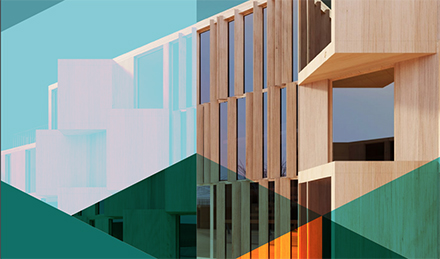
The European Confederation of Woodworking Industries (CEI Bois) is calling on politicians to put wood at the centre of plans to reduce emissions and achieve zero carbon targets. CEI Bois has released a new publication, Wood: Building the Bioeconomy, which shows how the EU can reduce emissions by using low carbon, renewable, biological alternatives such as timber over high carbon materials such as concrete, steel and plastic. Source: Timberbiz
The book shows this would be good not just for the climate, but also the economy. Increasing the use of European wood-based products in global construction, textile and plastics markets could generate as much as €60bn of revenue.
“If we are to restore balance in the atmosphere, we need to reduce emissions in the first place, while also increasing the capacity of the global carbon sink,” said Patrizio Antonicoli, Secretary General of pan-EU industry body CEI Bois.
“Forests and timber are part of both solutions, absorbing carbon from the atmosphere, and storing it as wood. Timber harvested from the forests can be turned into high-value products for construction using only a fraction of the energy and carbon that other materials would need.
“The more Governments across the continent can support and invest in wood, the more valuable this bioeconomy can become, helping to reverse the adverse climate and environmental impacts of human activity, and meet our obligations under the Paris agreement.”
EU forests provide a net sink of around 424 million tonnes of carbon dioxide every year, equivalent to around 10% of the total GHG emi equivalent to around 10% of the total GHG emissions of Europe.
Thanks to sustainable forest management by the industry, this massive carbon sink has grown by 9% in area as compared with 25 years ago. A total of 43% of the EU is now covered in trees, supporting the livelihood of around 3 million people, with forest producing around 470 million m3 of roundwood and building thousands of homes which are high quality, warm, and sustainable.
The development of cross-laminated timber (CLT) means timber can be have a higher strength to weight ratio than steel and the fire resistance to be used in high rise buildings, and universities and businesses continue to innovate to make it even more versatile.
As a material lends timber lends already itself to modern methods of construction, such as offsite, with timber frame able to be built up to a third quicker than other methods using brick and masonry and producing up to 90% less waste.
Download a free copy of Wood: Building the BioEconomy
http://www.cei-bois.org/wp-content/uploads/2019/10/Final-Version-22.10.2019.pdf





